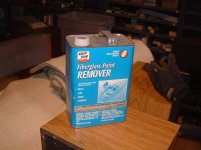Gunkote is the best finish for the metal parts (Internal & external) for a couple of reasons.
The 2400 series contains quite a bit of Mollybdenum Disulfide (Molly) which is a dry lubricant. That lubricant embedded in the finish will cause parts to move smoother against each other.
Gunkote 2400 series will burnish. That means that freshly coated internal parts that start out a little tight will wear against each other and end up with a perfect fit.
Both of those together result in a smoother action that requires less force to make "go".
Plus, the 2400 series is 100% non-reactive to aviation fuel, acetone, battery acid, chlorine, extreme heat, extreme cold, salt water, etc. Duracoat wont do any of these things. It has no built in lube, it won't burnish, it can't be used on close tolerance internal moving parts and the distributor can't say how it holds up to assorted chemicals because there were never any lab tests done on it! At least none that they're talking about. On top of that: Gunkote was developed as a finish for military firearms. Duracoat (Polane) was developed by Sherwin Williams as a finish for the sides of tractors. Ok, I feel better now!!
As far as the stock is concerned, Polane would probably be ok for that but I won't use it for anything. We use a finish that we call Tuff-Stock but it was really developed as a finish for the guard rails on offshore oil platforms. We just apply it a little different.
If you want a do-it-yourself type stock finish, I've heard quite a few people say that they've had good luck with the trunk type sprays that they get in auto parts stores. The biggest "trick" for a good looking finish is the preparation that you do prior to applying the finish. That's 90% of the work. Keep yer powder dry, Mac.
Tuff-Gun Finishes. The Name Says It All.
Mac's Shootin' Irons
http://www.shootiniron.com
